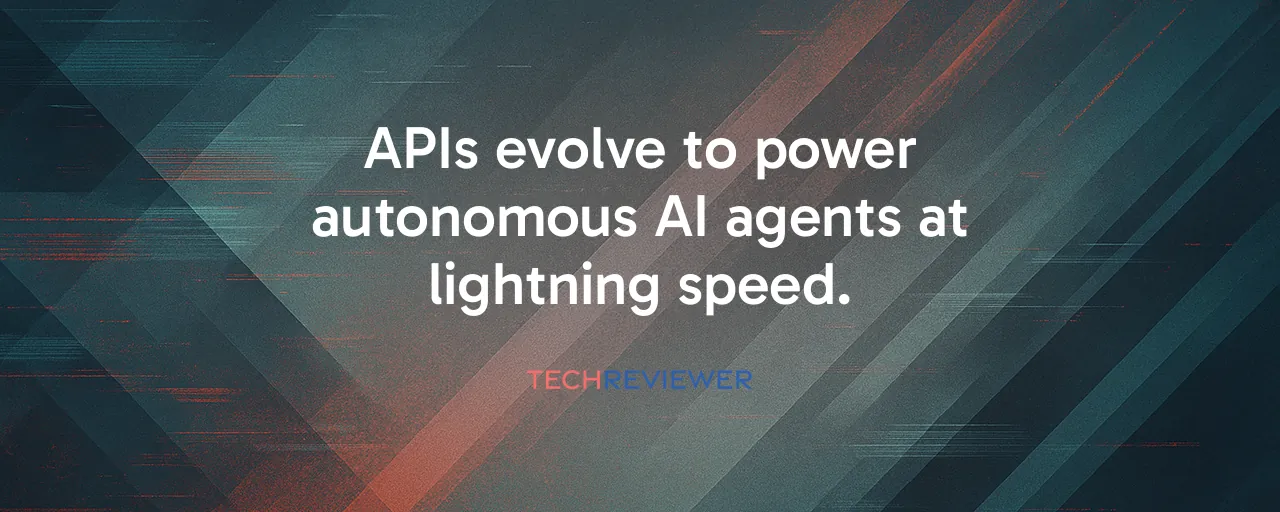APIs Enter the AI Agent Era
Application programming interfaces, or APIs, have long been the backbone of software, connecting apps and services with a quiet efficiency. Now, they're stepping into a new role: powering AI agents that operate at lightning speed. A recent survey of over 5,700 developers shows 24.3% are now building APIs specifically for AI systems, a clear sign that the demands of autonomous agents are reshaping how developers think about their craft. These interfaces are increasingly built for machine-driven interactions that process data and make decisions in milliseconds, moving beyond their traditional human-coder focus.
This shift started gaining traction as AI adoption exploded. With 89% of developers using generative AI tools daily, the pressure is on to create APIs that speak the language of machines. Companies like Anthropic and OpenAI have leaned into this, launching frameworks in 2024 and 2025 to help AI agents interact seamlessly with APIs. The catch? Most existing APIs were designed for human developers, leaving a gap that businesses are scrambling to fill.
Real-World Wins and Lessons
Take Anthropic's Model Context Protocol, launched in November 2024. It offers a standardized way for AI agents to connect with external data sources, using structured schemas and unified authentication. Developers love it for its clarity; 67% are aware of the protocol, though only 10% use it in production. Why the slow uptake? Building APIs that AI can reliably parse takes time, and many teams are still retrofitting older systems. Still, early adopters report faster integration and fewer errors, especially in industries like finance where precision matters.
Contrast that with Postman's Agent Mode, announced in June 2025. This tool uses AI to automate API design, testing, and monitoring, cutting down on manual grunt work. A startup using Agent Mode shaved weeks off their development cycle by letting AI handle repetitive tasks like schema validation. Larger enterprises, however, face hurdles. With 93% of teams reporting collaboration issues, like missing documentation or duplicated efforts, tools like Agent Mode can help but don't fully solve the problem. The lesson? Automation is powerful, but human oversight remains critical.
Security Keeps Teams Up at Night
As APIs open the door to AI agents, security risks are spiking. Over half of developers (50.8%) point to rogue AI agents making unauthorized API calls as their top concern. Another 49% worry about sensitive data exposure, and 45.95% flag credential leakage as a growing threat. These aren't hypothetical fears. A retail company recently faced a breach when an AI agent exploited a poorly secured API, exposing customer data. The fix? New authentication frameworks that give each agent cryptographic credentials and strict access controls.
Security teams are adapting fast, using machine learning to spot unusual API activity. Unlike older systems that relied on known attack patterns, these tools establish baselines for normal behavior and flag anything off-kilter. It's a cat-and-mouse game, but the stakes are high. As AI agents become more autonomous, ensuring they only access what they're allowed to is a priority for every organization.
Revenue and Opportunity on the Horizon
The upside of this API evolution is hard to ignore. A striking 64.5% of organizations now generate revenue directly from APIs, turning them from technical tools into business assets. For example, a logistics company built an AI-driven API that lets partners track shipments in real time, creating a new subscription-based revenue stream. Smaller startups are jumping in too, using platforms like AWS and Azure to deploy APIs that power AI-enhanced services, from chatbots to predictive analytics.
The catch is that success hinges on execution. With 83.2% of teams adopting API-first approaches, the focus is on creating clear, machine-readable schemas that reduce errors and speed up development. Companies that get this right can work faster, integrating APIs with tools like GitHub or Jira to streamline workflows. Those that don't risk falling behind as AI agents become the dominant consumers of API traffic.
Balancing Speed, Scale, and Stability
The rise of AI-driven APIs brings a delicate balancing act. Developers need to move fast to meet market demands, but rushing can lead to sloppy documentation or security gaps. Enterprises are investing heavily (46% plan to boost API budgets in the next year) but smaller teams often lack the resources to keep up. Open standards, like those from the OpenAPI Initiative, are helping by providing templates for AI-friendly APIs, but adoption is uneven.
Looking ahead, the gap between AI's potential and today's infrastructure will narrow. Tools like Postman's Agent Mode and Anthropic's protocol show what's possible when APIs are built with machines in mind. Still, challenges like collaboration breakdowns and security threats remind us that technology alone isn't enough. Developers, security teams, and business leaders need to align to make APIs the backbone of an AI-powered future.
